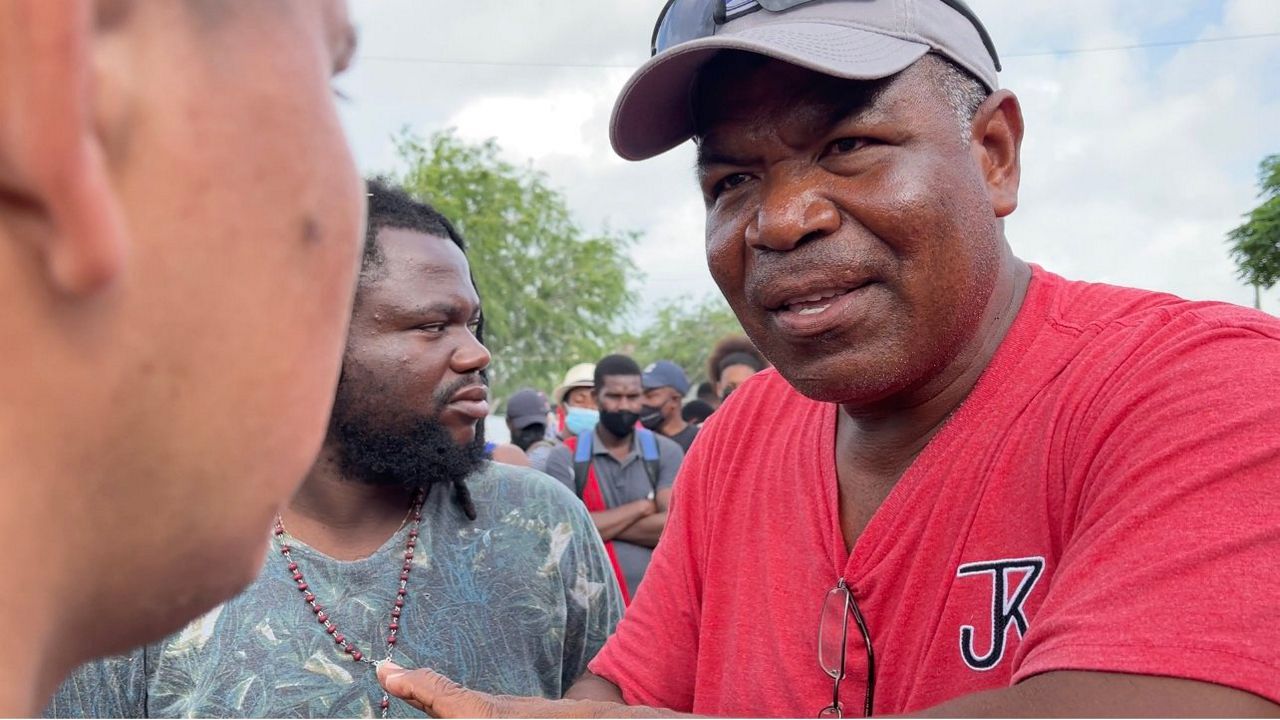MATAMOROS, Mexico — On the same day U.S. Department of Homeland Security Secretary Alejandro N. Mayorkas spoke with members of DHS workforce to discuss border readiness and response, Haitian asylum seekers in Matamoros, Mexico, placed their names on a long waiting list at Dulce Refugio Migrant Shelter.
“Look at the list,” said one of the shelter’s workers. “People waiting for shelter.”
Haitian refugees are stacking up south of the border by the thousands, anticipating the lifting of federal public health code Title 42, which currently blocks most of legal immigration. Mayorkas said this of Title 42 during the border tour on the U.S. side.
“You know, look, Title 42 is a public health authority, and it was imposed because of the pandemic," Mayorkas said. “It is our hope that the pandemic is behind, you know, gets behind us once and for all. And we started planning last year, understanding that Title 42 would not, in fact, be around forever.”
Reynosa, Mexico’s largest shelter, Senda de Vida 1, is beyond capacity. The last estimate was 2,000 migrants, according to shelter operator Pastor Hector Silva. A new sister shelter in Reynosa, Senda De Vida 2, recently opened earlier this week. The property is scheduled to hold 3,000 asylum seekers. Well over 1,000 have set up tents inside the secure walls of that refuge.

A great majority of the people staying in the Matamoros and Reynosa shelters are Haitian. A few weeks ago, most migrants were from Central America, South America and Cuba.
Shelter operators in both cities are watching the fast pace of shifting demographics.
“Every day we are seeing more and more,” said Damien with Dulce Refugio, “many more and many Haitians.”
Dulce Refugio Shelter Director Samuel Ruiz sums up the situation easily.
“We are full. There is no space. This is a crisis,” he said.
Asylum seekers at shelters are waiting for Title 42 to lift, to legally have a chance to enter the United States.
Mayorkas expressed concerned for the volume of illegal crossings happening every day.
“We have a high rate of recidivism because of Title 42, but we have a high rate of individual encounters, regardless of recidivism,” Mayorkas said. “In the immediate term, I think we’re concerned that we see a greater level of encounters at the border.”




